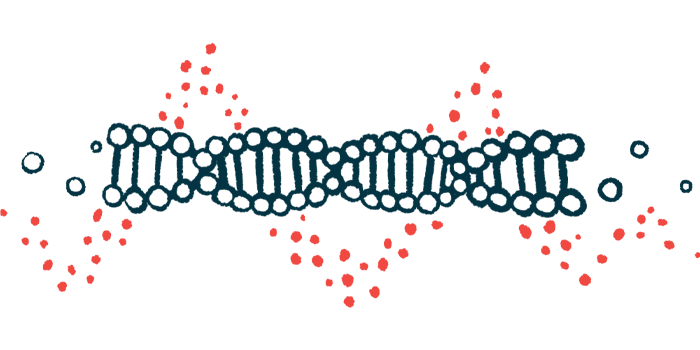DNA repair, other genes shape Huntington’s disease trajectory
Study findings based on genetic data from more than 16,000 patients
Written by |

Both DNA repair and non-repair genes influence how and when Huntington’s disease develops, according to a study based on genetic data from more than 16,000 people with the disorder that also provides new potential targets for treatment.
In addition, these findings reveal complex mechanisms behind CAG repeat expansions, the mutation underlying the disease, and provide clues to other disease-causing mechanisms.
The study, “Genetic modifiers of somatic expansion and clinical phenotypes in Huntington’s disease highlight shared and tissue-specific effects,” was published in Nature Genetics.
Huntington’s disease mainly caused by changes in mismatch DNA repair system
Huntington’s is caused by excessive repeats of a trio of nucleotides — a cytosine (C), an adenine (A), and a guanine (G) — in the HTT gene. This leads to the production of a longer-than-normal huntingtin protein that forms toxic clumps, causing nerve cell damage and motor, cognitive, and behavioral symptoms. Nucleotides are DNA’s building blocks.
CAG repeat expansions are unstable, and they can progressively lengthen over time in certain cells through a process called somatic expansion. These somatic expansions are believed to contribute to disease onset and progression, with longer CAG repeats being associated with earlier onset and more severe disease.
To better understand how somatic expansion occurs, a team of international researchers compared data from large genetic studies that looked at somatic CAG expansion in blood cells with those that focused on CAG length-driven Huntington’s symptoms.
Data came from 16,640 people diagnosed with Huntington’s, 5,379 of whom were participating in Enroll-HD (NCT01574053), the world’s largest observational study on Huntington’s.
The researchers found somatic expansion in Huntington’s is mainly caused by changes in the body’s mismatch DNA repair system, rather than a general DNA damage response.
During duplication of the two-strand DNA molecule, the wrong nucleotides are sometimes added to the newly formed DNA strand, creating a DNA mismatch with the adjoining, original strand. DNA mismatch repair genes normally help to correct this type of DNA damage, but in Huntington’s, they contribute to an expansion of the CAG repeats.
The effects of variants in these repair genes, including MSH3, PMS2, and FAN1, showed “unexpected complexity, including cell-type specificity,” the researchers wrote.
Some variants in these genes showed concordant effects significantly associated with both increased somatic expansion in blood cells and earlier symptom onset, but others did not.
Given that symptoms are the result of nerve cell death, the lack of concordant effects of some variants suggests “differentially modifiable regulation of these genes in brain and [blood] cells,” the team wrote.
Variant associated with a 10-year-earlier motor symptom onset
Still, “the candidacy of MSH3 as a top target for therapeutic downregulation to reduce or block somatic expansion is bolstered by the frequent MSH3 [variants] concordantly associated with clinical hastening and increased somatic expansion, suggesting that blood repeat expansion could provide a molecular biomarker for assessing potential therapeutics,” the researchers wrote.
In addition to DNA repair genes, genes not related to DNA repair — including MED15, RRM2B, CCDC82, and TCERG1 — appeared to affect Huntington’s clinical trajectory independently of somatic expansion.
Our findings are directly relevant to the therapeutic suppression of expansion in DNA repeat disorders and provide additional clues to HD … mechanisms beyond somatic expansion.
Furthermore, a variant near the CAG repeat sequence, called CAA/CCA-loss, was associated with a 10-year-earlier motor symptom onset, but did not increase the number of repeats in patients’ blood cells, lab-grown human cells, or brain samples from deceased patients. This further emphasized the existence of a yet-unclear mechanism influencing disease onset beyond somatic expansion.
A change in a non-coding part of the HTT gene, called the 5′ untranslated region, was linked to somatic expansion in blood cells, but did not modify Huntington’s clinical trajectory, “strongly implying an influence on somatic expansion in [blood] cells, but not neurons vulnerable to HD [Huntington’s disease],” the team wrote.
These findings support a model where Huntington’s is caused by excessive CAG repeats that suffer somatic expansion which is accelerated after a certain number of repeats. And when surpassing an even higher threshold of repeats, cell toxicity occurs.
Strategies targeting processes in each of these sequential phases of Huntington’s development may potentially help slow or halt the disease, the team noted. One such strategy is to prevent or slow CAG expansion.
“Our findings are directly relevant to the therapeutic suppression of expansion in DNA repeat disorders and provide additional clues to HD … mechanisms beyond somatic expansion,” the researchers wrote.







